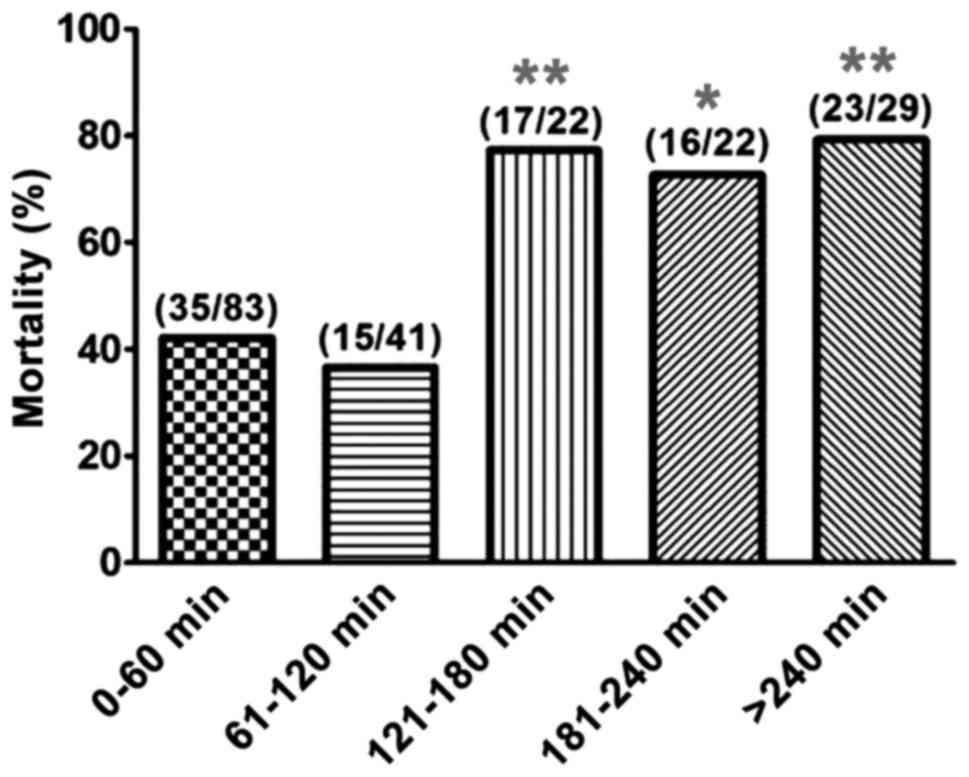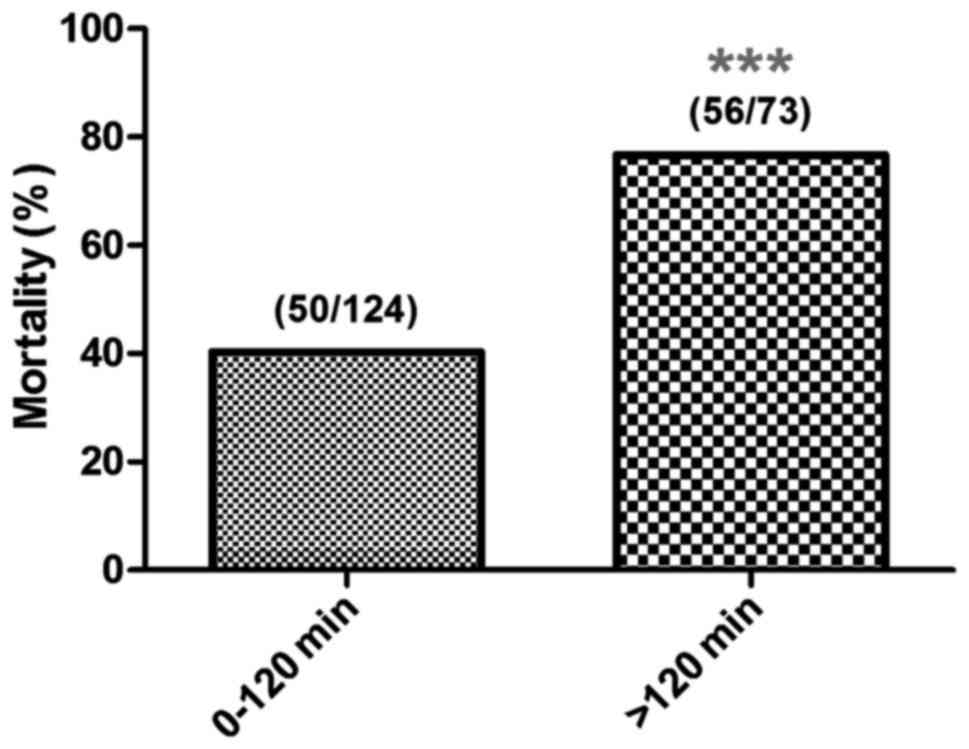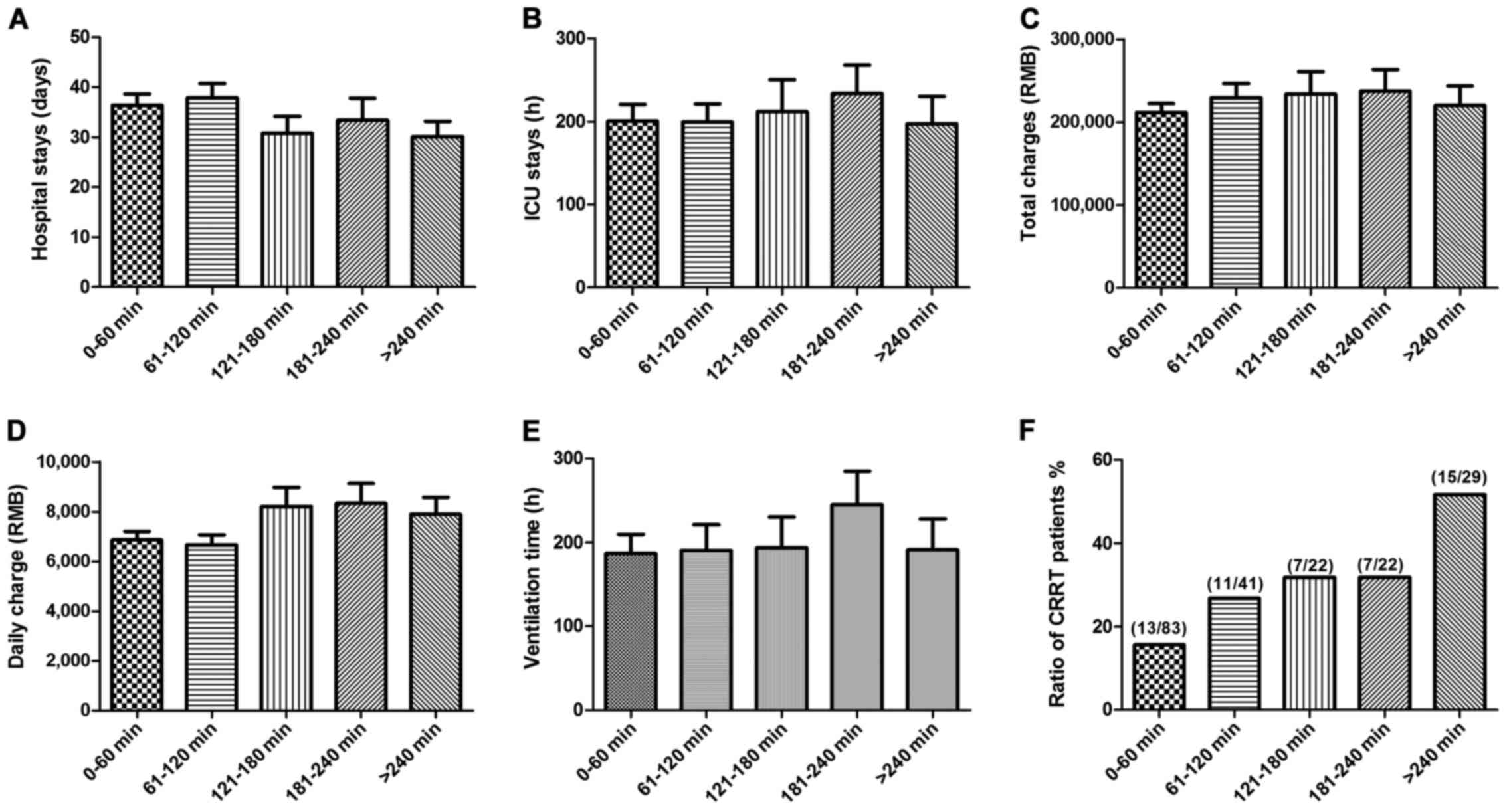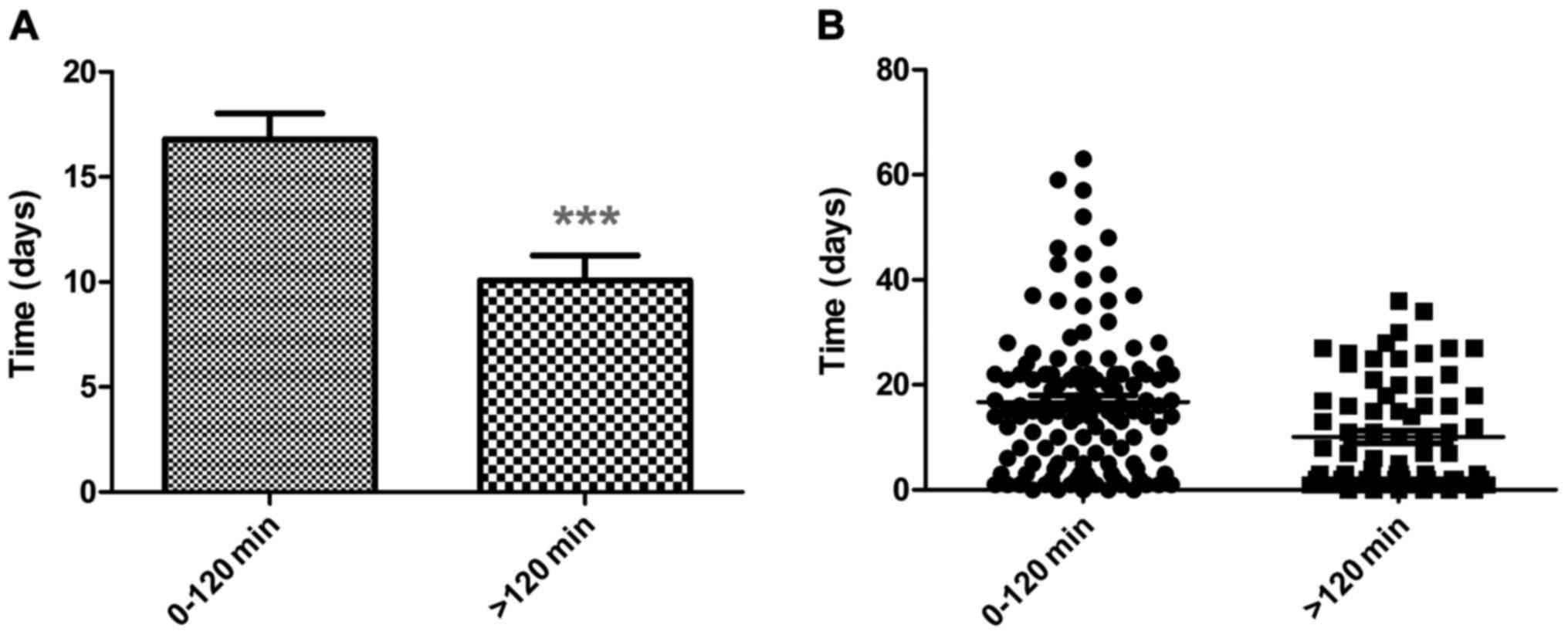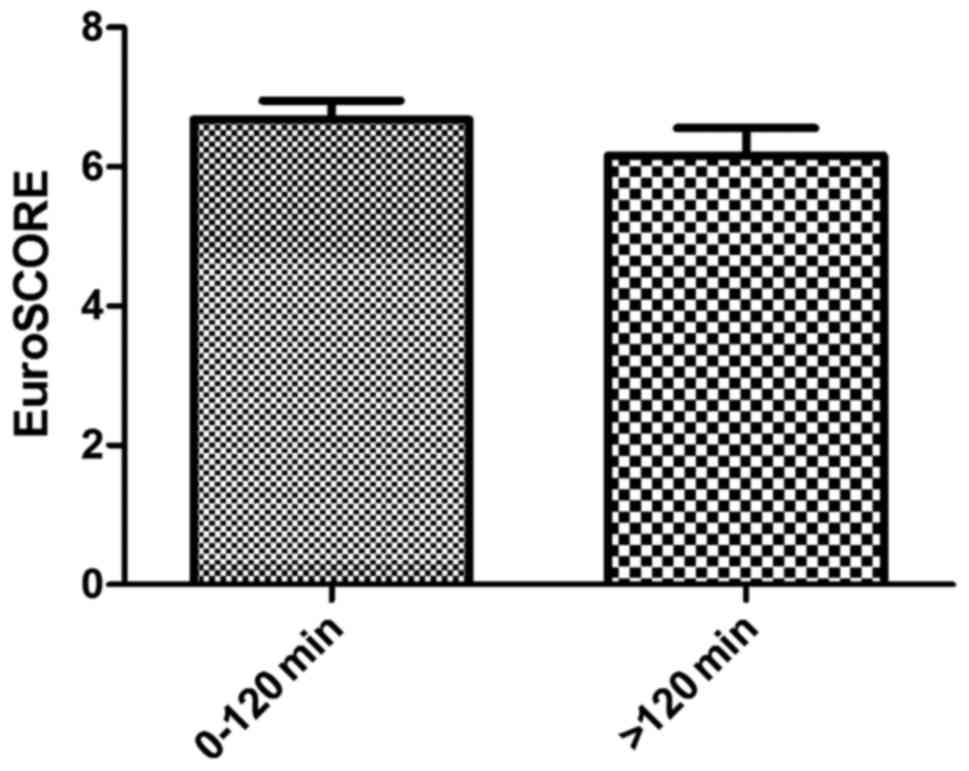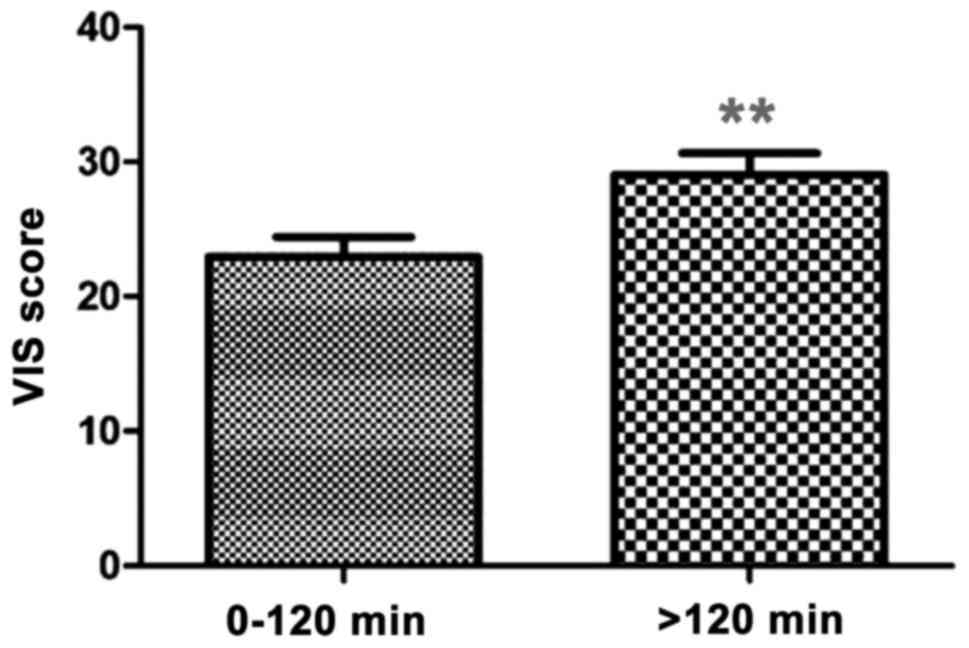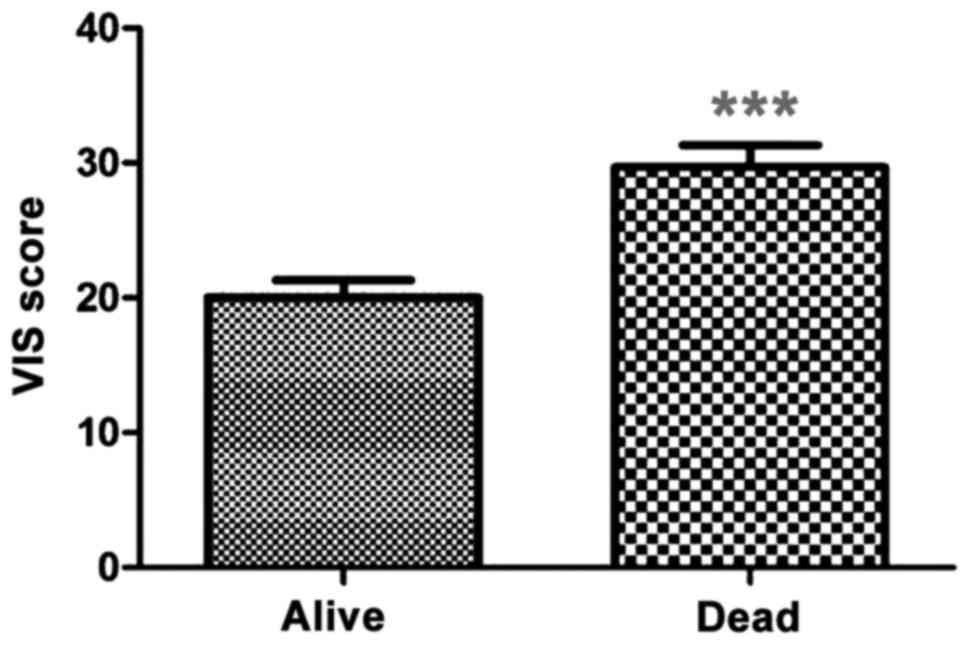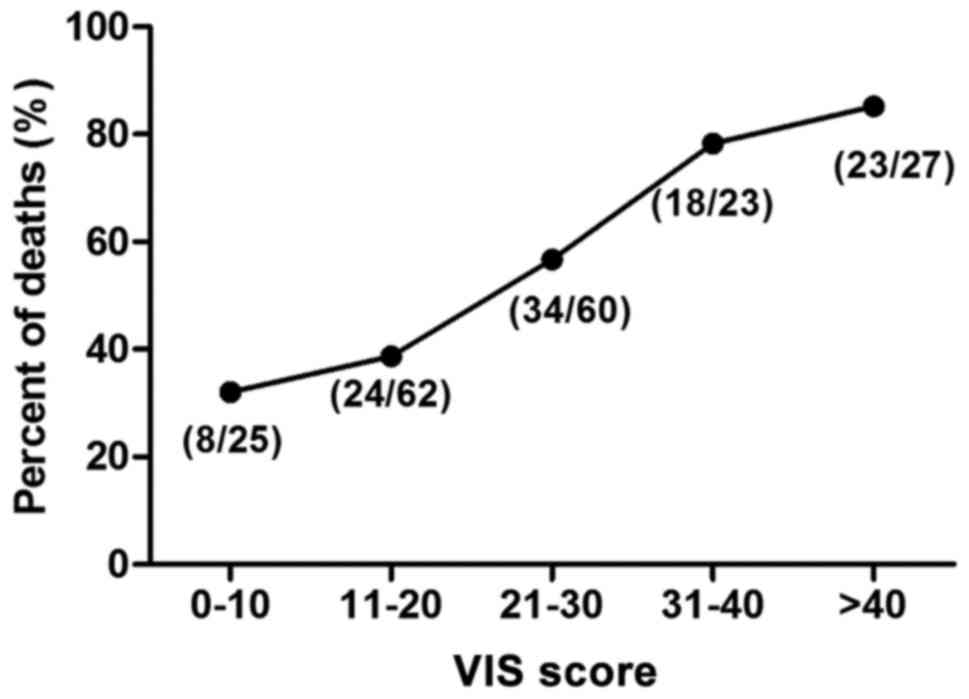|
1
|
Zhang J, Lang Y, Guo L, Song X, Shu L, Su
G, Liu H and Xu J: Preventive use of intra-aortic balloon pump in
patients undergoing high-risk coronary artery bypass grafting: a
retrospective study. Med Sci Monit. 21:855–860. 2015. View Article : Google Scholar : PubMed/NCBI
|
|
2
|
Ho CH, Chen ZC, Chu CC, Wang JJ and Chiang
CY: Temporal trends of in-hospital mortality in patients treated
with intra-aortic balloon pumping: a Nationwide Population Study in
Taiwan, 1998–2008. PLoS One. 10:e01315752015. View Article : Google Scholar : PubMed/NCBI
|
|
3
|
Cao J, Liu W, Zhu J and Zhao H: Risk
factors and clinical characteristics of in-hospital death in acute
myocardial infarction with IABP support. Int J Clin Exp Med.
8:8032–8041. 2015.PubMed/NCBI
|
|
4
|
Wan YD, Sun TW, Kan QC, Guan FX, Liu ZQ
and Zhang SG: The effects of intra-aortic balloon pumps on
mortality in patients undergoing high-risk coronary
revascularization: a meta-analysis of randomized controlled trials
of coronary artery bypass grafting and stenting era. PLoS One.
11:e01472912016. View Article : Google Scholar : PubMed/NCBI
|
|
5
|
Ranucci M, Ballotta A, Castelvecchio S, De
Vincentiis C, Biondi A, Parisi A, Menicanti L and Frigiola A:
Surgical and Clinical Outcome REsearch (SCORE) Group: Perioperative
heart failure in coronary surgery and timing of intra-aortic
balloon pump insertion. Acta Anaesthesiol Scand. 54:878–884. 2010.
View Article : Google Scholar : PubMed/NCBI
|
|
6
|
Kucuker A, Cetin L, Kucuker SA, Gokcimen
M, Hidiroglu M, Kunt A, Saglam F and Sener E: Single-centre
experience with perioperative use of intraaortic balloon pump in
cardiac surgery. Heart Lung Circ. 23:475–481. 2014. View Article : Google Scholar : PubMed/NCBI
|
|
7
|
Cove ME and MacLaren G: Clinical review:
mechanical circulatory support for cardiogenic shock complicating
acute myocardial infarction. Crit Care. 14:2352010. View Article : Google Scholar : PubMed/NCBI
|
|
8
|
Ferguson JJ III, Cohen M, Freedman RJ Jr,
Stone GW, Miller MF, Joseph DL and Ohman EM: The current practice
of intra-aortic balloon counterpulsation: results from the
Benchmark Registry. J Am Coll Cardiol. 38:1456–1462. 2001.
View Article : Google Scholar : PubMed/NCBI
|
|
9
|
Graf T and Thiele H: Mechanical support in
cardiogenic shock. Herz. 40:224–230. 2015.(In German). View Article : Google Scholar : PubMed/NCBI
|
|
10
|
Giridharan GA, Lee TJ, Ising M, Sobieski
MA, Koenig SC, Gray LA and Slaughter MS: Miniaturization of
mechanical circulatory support systems. Artif Organs. 36:731–739.
2012. View Article : Google Scholar : PubMed/NCBI
|
|
11
|
Bruti G, Kolyva C, Pepper JR and Khir AW:
Measurements of intra-aortic balloon wall movement during inflation
and deflation: effects of angulation. Artif Organs. 39:E154–E163.
2015. View Article : Google Scholar : PubMed/NCBI
|
|
12
|
Gilotra NA and Stevens GR: Temporary
mechanical circulatory support: a review of the options,
indications, and outcomes. Clin Med Insights Cardiol. 8:(Suppl 1).
75–85. 2015.PubMed/NCBI
|
|
13
|
Thiele H, Zeymer U, Neumann FJ, Ferenc M,
Olbrich HG, Hausleiter J, Richardt G, Hennersdorf M, Empen K,
Fuernau G, et al: IABP-SHOCK II Trial Investigators: Intraaortic
balloon support for myocardial infarction with cardiogenic shock. N
Engl J Med. 367:1287–1296. 2012. View Article : Google Scholar : PubMed/NCBI
|
|
14
|
Ihdayhid AR, Chopra S and Rankin J:
Intra-aortic balloon pump: indications, efficacy, guidelines and
future directions. Curr Opin Cardiol. 29:285–292. 2014. View Article : Google Scholar : PubMed/NCBI
|
|
15
|
Brugts JJ and Caliskan K: Short-term
mechanical circulatory support by veno-arterial extracorporeal
membrane oxygenation in the management of cardiogenic shock and
end-stage heart failure. Expert Rev Cardiovasc Ther. 12:145–153.
2014. View Article : Google Scholar : PubMed/NCBI
|
|
16
|
Feola M, Haiderer O and Kennedy JH:
Intra-aortic balloon pumping (IABP) at different levels of
experimental acute left ventricular failure. Chest. 59:68–76. 1971.
View Article : Google Scholar : PubMed/NCBI
|
|
17
|
Kapelios CJ, Terrovitis JV, Siskas P,
Kontogiannis C, Repasos E and Nanas JN: Counterpulsation: a concept
with a remarkable past, an established present and a challenging
future. Int J Cardiol. 172:318–325. 2014. View Article : Google Scholar : PubMed/NCBI
|
|
18
|
Nguyen HV, Havalad V, Aponte-Patel L,
Murata AY, Wang DY, Rusanov A, Cheng B, Cabreriza SE and Spotnitz
HM: Temporary biventricular pacing decreases the
vasoactive-inotropic score after cardiac surgery: a substudy of a
randomized clinical trial. J Thorac Cardiovasc Surg. 146:296–301.
2013. View Article : Google Scholar : PubMed/NCBI
|
|
19
|
Yu PJ, Cassiere HA, Dellis SL, Kohn N,
Manetta F and Hartman AR: Propensity-matched analysis of the effect
of preoperative intraaortic balloon pump in coronary artery bypass
grafting after recent acute myocardial infarction on postoperative
outcomes. Crit Care. 18:5312014. View Article : Google Scholar : PubMed/NCBI
|
|
20
|
Kucuker A, Cetin L, Kucuker SA, Gokcimen
M, Hidiroglu M, Kunt A, Saglam F and Sener E: Single-centre
experience with perioperative use of intraaortic balloon pump in
cardiac surgery. Heart Lung Circ. 23:475–481. 2014. View Article : Google Scholar : PubMed/NCBI
|
|
21
|
Gaies MG, Gurney JG, Yen AH, Napoli ML,
Gajarski RJ, Ohye RG, Charpie JR and Hirsch JC:
Vasoactive-inotropic score as a predictor of morbidity and
mortality in infants after cardiopulmonary bypass. Pediatr Crit
Care Med. 11:234–238. 2010. View Article : Google Scholar : PubMed/NCBI
|
|
22
|
Lu JG, Pensiero A, Aponte-Patel L, de
Villa Velez B, Rusanov A, Cheng B, Cabreriza SE and Spotnitz HM:
Short-term reduction in intrinsic heart rate during biventricular
pacing after cardiac surgery: a substudy of a randomized clinical
trial. J Thorac Cardiovasc Surg. 146:1494–1500. 2013. View Article : Google Scholar : PubMed/NCBI
|
|
23
|
Lundemoen S, Kvalheim VL, Svendsen OS,
Mongstad A, Andersen KS, Grong K and Husby P: Intraaortic
counterpulsation during cardiopulmonary bypass impairs distal organ
perfusion. Ann Thorac Surg. 99:619–625. 2015. View Article : Google Scholar : PubMed/NCBI
|
|
24
|
Geissler HJ, Hölzl P, Marohl S,
Kuhn-Régnier F, Mehlhorn U, Südkamp M and de Vivie ER: Risk
stratification in heart surgery: Comparison of six score systems.
Eur J Cardiothorac Surg. 17:400–406. 2000. View Article : Google Scholar : PubMed/NCBI
|
|
25
|
Garcia RU, Walters HL III, Delius RE and
Aggarwal S: Vasoactive inotropic score (VIS) as biomarker of
short-term outcomes in adolescents after cardiothoracic surgery.
Pediatr Cardiol. 37:271–277. 2016. View Article : Google Scholar : PubMed/NCBI
|
|
26
|
Ishibashi N, Miyasho K, Kitamura T, Ookuma
T, Kashitani N, Beika N, Yamashita T and Ujike Y: Hemodynamic
effects of intravenous calcium administration on septic shock
patients: a retrospective study. Acta Med Okayama. 69:197–204.
2015.PubMed/NCBI
|
|
27
|
Su D, Yan B, Guo L, Peng L, Wang X, Zeng
L, Ong H and Wang G: Intra-aortic balloon pump may grant no benefit
to improve the mortality of patients with acute myocardial
infarction in short and long term: an updated meta-analysis.
Medicine (Baltimore). 94:e8762015. View Article : Google Scholar : PubMed/NCBI
|
|
28
|
Svitek V, Mand'ák J and Harrer J:
Intra-aortic balloon counterpulsation in cardiac surgery patients -
experiences of Department of Cardiac Surgery, Charles University,
Faculty of Medicine in Hradec Králove, University Hospital Hradec
Králové, Czech Republic. Rozhl Chir. 87:68–73. 2008.(In Slovak).
PubMed/NCBI
|
|
29
|
Kovács E, Becker D, Daróczi L, Gálfy I,
Hüttl T, Laczkó A, Paukovits T, Vargha P and Szabolcs Z: Analysis
of vascular complications of IABP therapy in open-heart surgery
patients 1999–2004. Magy Seb. 59:105–111. 2006.(In Hungarian).
PubMed/NCBI
|
|
30
|
Lauwers E, Meese G, Adriaensen H, Amsel B
and Van der Mast M: Perioperative intra-aortic balloon
counterpulsation in cardiosurgery: a retrospective study. Acta
Anaesthesiol Belg. 41:41–45. 1990.PubMed/NCBI
|
|
31
|
Meco M, Gramegna G, Yassini A, Bellisario
A, Mazzaro E, Babbini M, Pediglieri A, Panisi P, Tarelli G,
Frigiola A, et al: Mortality and morbidity from intra-aortic
balloon pumps. Risk analysis. J Cardiovasc Surg (Torino). 43:17–23.
2002.PubMed/NCBI
|















